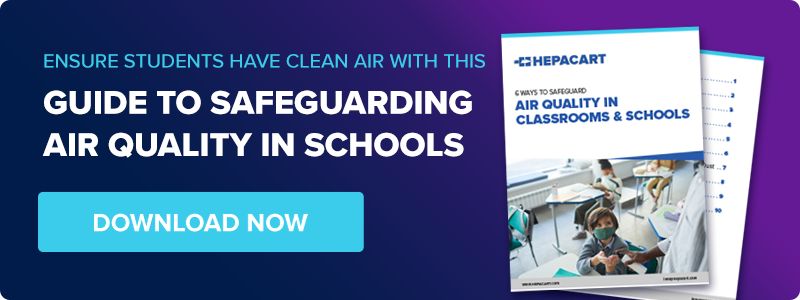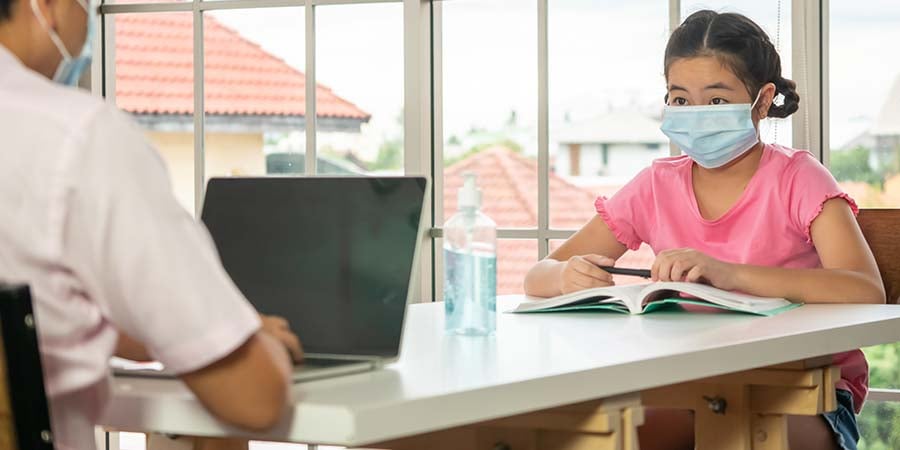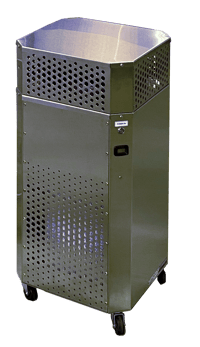Share this
What Facility Managers Are Doing for School Reopenings
by HEPACART on Sep 23, 2021
Should schools reopen during COVID? If they do, what can be done to prepare for the fall and winter?
We know much more than we did a year ago about the challenges of remote learning for many students, the hardship home learning created for working parents, and the surprisingly low likelihood of in-person learning leading to super-spreader events.
Yet, the more transmissible COVD-19 variants, combined with varying vaccination rates, have given us another year of uncertainty as students, teachers, and staff return to school. COVID-19 cases are spiking in much of the country. The question "should schools reopen during COVID?" has been answered in the affirmative, a seeming consensus from educators, politicians, and the medical community.
Mask-wearing rules and vaccination recommendations vary widely from one school to the next. For school facility management it boils down to one question: how does one make a building safe for everyone?
Adding to the pressure, school facility managers have been dragged into the light from their former roles as relatively invisible, behind-the-scenes facilitators, assuming (willingly or not) the role of front-line officials responsible for everyone's safety.
Here are some things to consider in preparation for this fall and winter when students, teachers, and staff are indoors.

Covering, Cohorting, Distancing
Since many school children will still be ineligible for the vaccine, keeping the entire school's population safe will require a combination of preventive measures.

Many state health departments are recommending a "layered approach" to include as many as possible of the following:
- Regular and transparent Communication
- Contact Tracing
- Vaccinating
- Masking
- Physical distancing
- Cohorting
Eventually, vaccination eligibility will reach younger student populations, which could alter the need for masking and distancing. Until then, the Centers for Disease Control recommends that schools focus on mitigation measures such as masking, social distancing, and contact tracing.
Cohorting means reducing intermixing of larger populations by keeping groups of limited size together. This is done more easily with elementary school students than with older students, where a single teacher might remain with a group throughout the day. Cohorting could also help officials track the spread of the virus more efficiently and mitigate the spread to other students by isolating the group involved in the outbreak.
In recommendations for school reopening, the National Charter Schools Institute enumerates typical school spaces that should be reconfigured to encourage social distancing, including.
- Classrooms
- Offices
- Meeting rooms
- Lunchrooms
- Gym
- Playground
Recent CDC guidance for K-12 schools has reduced recommended distance from six to three feet, based on new evidence. But three feet requires universal masking to be effective. In communities where transmission is high, says the CDC, middle school and high school students should stay six feet apart.
Who else should try to stay six feet apart, according to the CDC?
- Adults, both from other adults and from students.
- Anyone in common areas such as lobbies and auditoriums.
- Wherever masks can't be worn, such as in cafeterias while eating.
- During activities that involved increased breathing: band, chorus, sports, exercise.
- When outside of the classroom in community settings.
Other Steps To Limit The Spread
A year ago, there was much talk about cleaning and disinfecting surfaces. With an additional year of experience, we now know that, while necessary, cleaning surfaces does not address the primary transmission mechanism for the SARS-CoV-2 virus. Although coronaviruses can survive on surfaces for days, they usually die within hours, says the CDC in its document Guidance for Cleaning and Disinfecting Public Spaces, Workplaces, Businesses, Schools, and Homes.
We also know that the vast majority of COVID-19 cases come from breathing droplets containing the virus. And while social distancing and masking can help tremendously, just distancing yourself from others in a closed space won't protect you completely.

According to a May 2021 CDC science brief:
"People release respiratory fluids during exhalation (e.g., quiet breathing, speaking, singing, exercise, coughing, sneezing) in the form of droplets across a spectrum of sizes. These droplets carry the virus and transmit infection.
The largest droplets settle out of the air rapidly, within seconds to minutes.
The smallest very fine droplets, and aerosol particles formed when these fine droplets rapidly dry, are small enough that they can remain suspended in the air for minutes to hours."
This is exactly where upgrading HVAC systems and adding air scrubbers and air purification technology can help.
HVAC Upgrades, Ventilation, & Air Purification
While ventilation should be improved when possible by opening windows and doors, says the CDC, that is practical only in fair weather. Therefore, upgrades to the building's HVAC system should include things such as:
- Reprogramming controls to increase the percentage of outside air
- Disabling energy-saving controls that reduce air circulation
- Revising supply and exhaust fixtures to move air from clean to less clean areas
- Installing filters with a higher MERV rating
As important as these steps are, a dangerous pathogen can float around and find areas in which to survive, and large gatherings such as student assemblies can drive up the viral load in the air. Supplemental portable HEPA filtration, especially when combined with ultraviolet germicidal irradiation, makes the air in high-risk areas such as choir practice rooms and cafeterias safer to breathe.

Our HEPAFORCE® GermBuster Room Air Purifier with UV-Force® is a compact unit on casters that continuously disinfects the air in a 3,200-foot room six times per hour. It reduces viral load in the air to non-infectious levels by using the most effective portion of the ultraviolet wavelength, called far-UVC, to inactivate bacteria, viruses, and spores by breaking the bonds of their molecules.
If you have a smaller space that needs air filtration and doesn't require far-UVC sterilization, check out our HEPAFORCE® GermBuster 300 Room Air Purifier.
So, for seasons when opening doors and windows is impractical, consider adding supplemental air purification in strategic locations.
Conclusion
In the past, infection control has quite naturally been more of a concern for hospitals than for schools. Now, some of the tools used in hospitals are of greater interest to facilities managers in schools and other non-medical buildings. For more on this subject and more insights on keeping your school’s air clean and occupant safe, read this article on germ mitigation during COVID and flu season.

